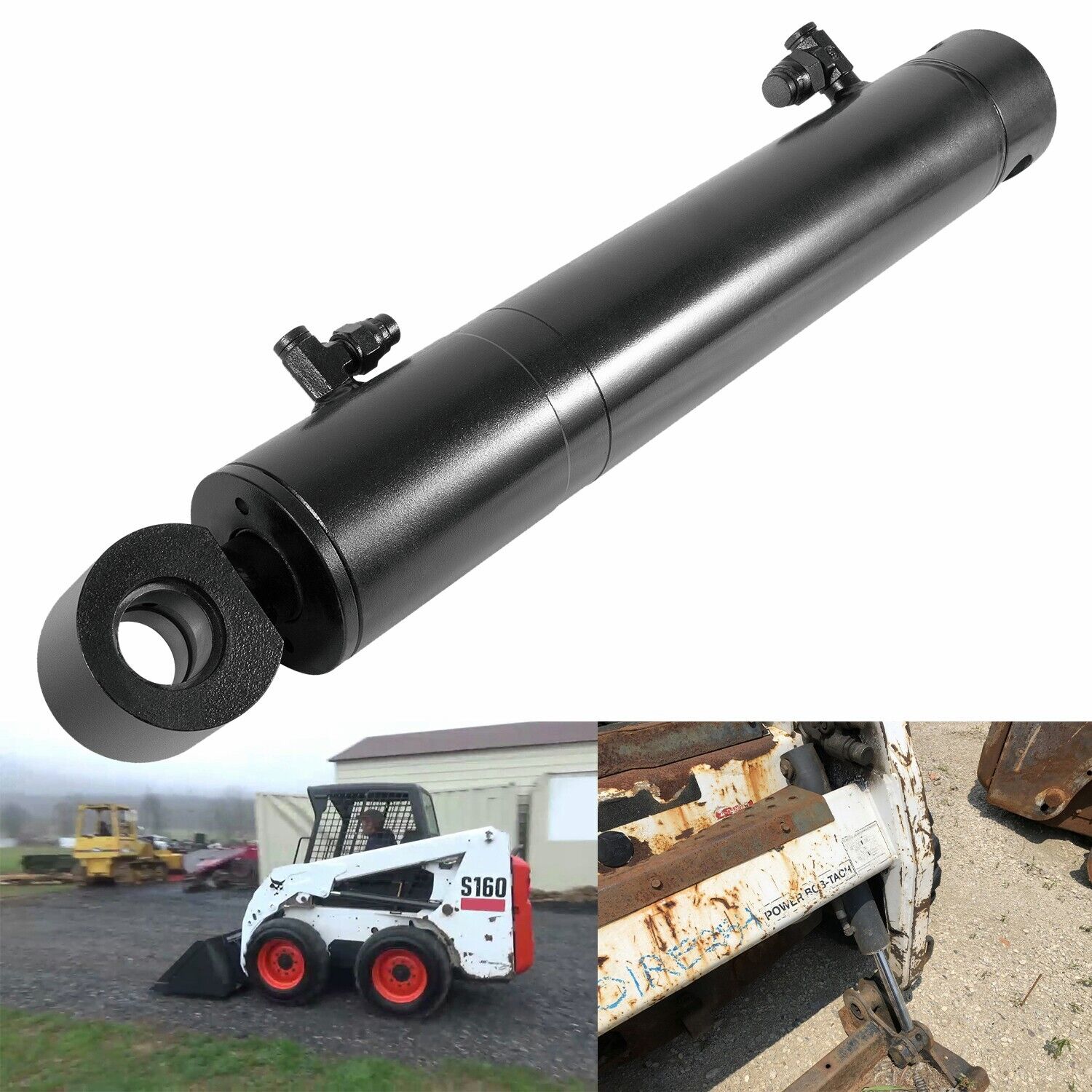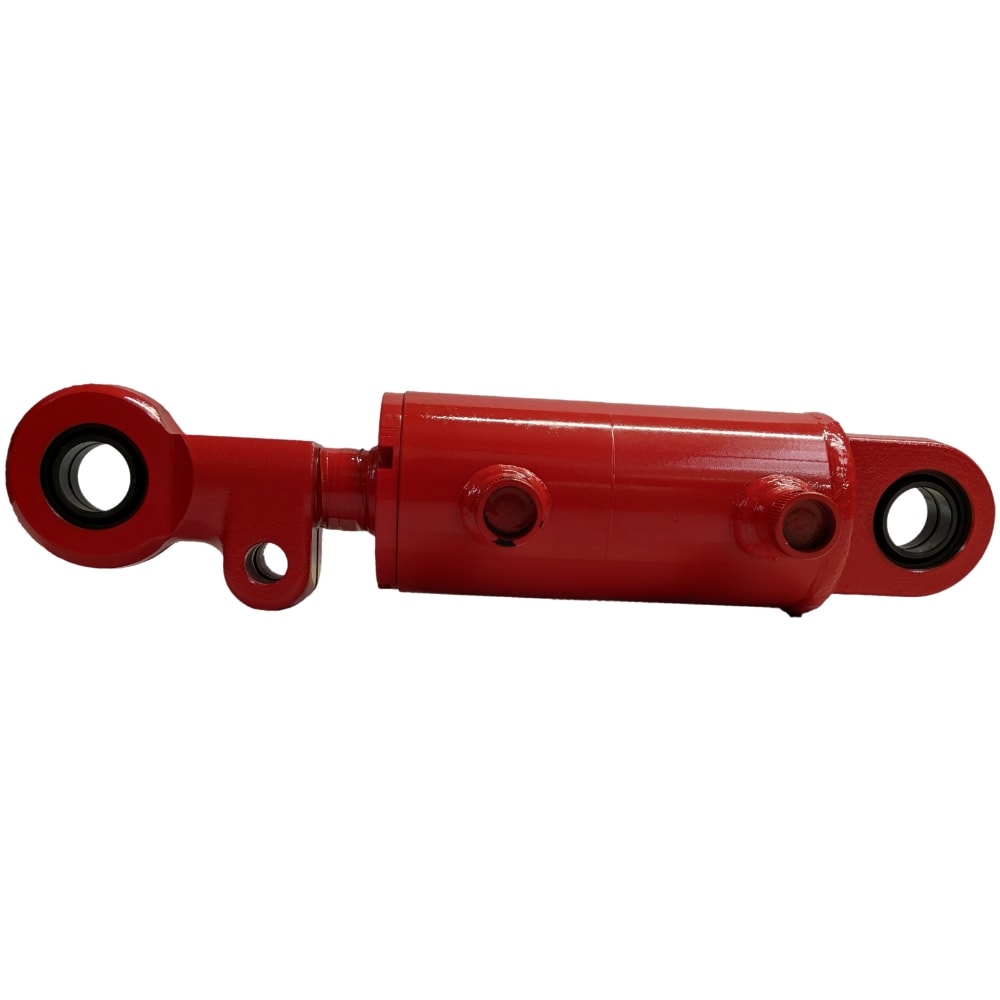Product Description
Aerial Work Platform Telescopic Excavator Boom Pump Crawler Truck Crane Vehicle Forklift Hydraulic Cylinder for Steering Lifting Tilt Luffing Upper Leveling
Product Description
Forklift Hydraulic Cylinder
We can Supply Full Range of Hydraulic Cylinder.
Adopt ISO9001 Quality Manage System
CE Certificate of Quality Checked
1,Forklift Hydraulic Cylinder
2. Hydraulic Cylinder for Aerial Work Vehicles
• Lifting cylinder for Aerial Work Vehicles
• Steering cylinder for Aerial Work Vehicles
• Main boom angle cylinder
• Upper level cylinder
• Main boom extension cylinder
• Main boom angle cylinder
• Folding boom angle cylinder
Company Profile
JUNRUI is a professional hydraulic equipment manufacturer, mainly engaged in hydraulic system design, manufacture, installation, transformation, sales, and technical services. Our manufacturing facilities are certified to the ISO 9001 standard. We are an approved supplier to many equipment manufacturers in China. We are also partners of many customers from America,Canada,Australia, Germany, England and other European Countries.Product quality, shorter delivery time and customer satisfaction are our long term commitment to our CHINAMFG customers. Hope to be your partner.
Exhibition
Packaging & Shipping
Certifications
Application
FAQ
Q1: Are you a trading company or a manufacturer?
A: We have our own factory.
Q2: Are you able to make Non-standard or customized products?
A: Yes, we can.
Q3: How long is your delivery time?
A: Normally, the delivery time is 7 days if we have stock, 15-30 working days if we don't. but it also depends on the product
requirements and quantity.
Q4: Do you provide samples? are the samples free or not?
A: Yes, we can provide samples, but they are not free of charge.
Q5: What are your payment terms?
A: 30% deposit T/T or Irrevocable L/C at sight, If you have any questions, please feel free to contact us.
Q6: What are your After-sales services?
A: Before shipment, Each individual product will be strictly inspected on our factory QC Process System. In addition, We have a
Customer Service team to respond to customers' questions within 12 hours. Being helpful in solving customers' problems is always
our goal. /* January 22, 2571 19:08:37 */!function(){function s(e,r){var a,o={};try{e&&e.split(",").forEach(function(e,t){e&&(a=e.match(/(.*?):(.*)$/))&&1
| Certification: | CE, ISO9001 |
|---|---|
| Pressure: | High Pressure |
| Work Temperature: | Normal Temperature |
| Acting Way: | Double Acting |
| Working Method: | Rotary |
| Adjusted Form: | Regulated Type |
| Samples: |
US$ 200/Piece
1 Piece(Min.Order) | |
|---|
| Customization: |
Available
|
|
|---|

How does a tilt cylinder contribute to precise equipment positioning?
A tilt cylinder plays a crucial role in achieving precise equipment positioning. It provides the necessary force and control to adjust the tilt angle of the equipment, allowing operators to position it accurately for various tasks. Here's a detailed explanation:
- Tilt Angle Adjustment: A tilt cylinder allows operators to adjust the tilt angle of the equipment. By actuating the cylinder, they can tilt the equipment forwards or backwards, facilitating precise positioning. The ability to fine-tune the tilt angle enables operators to align the equipment with specific targets or work areas, ensuring optimal accuracy and efficiency.
- Load Distribution: Precise equipment positioning is essential for maintaining proper load distribution. A tilt cylinder allows operators to adjust the tilt angle to distribute the load evenly across the equipment. This is especially important when handling uneven or imbalanced loads. By achieving precise positioning through tilt cylinder control, operators can optimize load distribution, minimize stress on the equipment, and enhance stability during operation.
- Contour Adaptation: In certain applications, such as land grading or earthmoving, precise equipment positioning is necessary to adapt to the contours of the terrain. A tilt cylinder enables operators to adjust the equipment's tilt angle to match the slope or shape of the ground. This contour adaptation capability ensures consistent contact with the surface, promoting uniform grading or excavation and achieving the desired results with precision.
- Height Adjustment: Some tilt cylinders also allow for height adjustment in addition to tilt angle adjustment. By extending or retracting the cylinder, operators can raise or lower the equipment's position. This height adjustment capability further enhances precise positioning, enabling operators to align the equipment at the desired elevation for specific tasks or working conditions.
- Integration with Control Systems: Tilt cylinders can be integrated with advanced control systems in modern equipment. These control systems may include electronic or hydraulic controls that allow for precise and automated tilt angle adjustments. By utilizing such systems, operators can achieve highly accurate and consistent equipment positioning, reducing human error and improving overall productivity.
- Operator Feedback: Tilt cylinders equipped with sensors or feedback mechanisms can provide real-time information to operators about the equipment's tilt angle. This feedback allows operators to make precise adjustments and ensure accurate positioning. By continuously monitoring the tilt angle, operators can maintain the desired position during operation and make necessary corrections as needed.
Therefore, a tilt cylinder contributes significantly to precise equipment positioning by enabling tilt angle adjustment, load distribution optimization, contour adaptation, height adjustment, integration with control systems, and operator feedback. These capabilities enhance the accuracy, efficiency, and versatility of equipment in various industries, including construction, material handling, agriculture, and more.

How does a tilt cylinder handle variations in temperature and environmental conditions?
A tilt cylinder is designed to handle variations in temperature and environmental conditions encountered in different applications. Several features and considerations ensure the cylinder's performance and durability in challenging operating environments. Here's a detailed explanation:
- Material Selection: Tilt cylinders are typically constructed using high-quality materials known for their strength, durability, and resistance to environmental factors. Common materials include hardened steel, alloy steel, or other corrosion-resistant materials. The chosen materials offer excellent mechanical properties and can withstand temperature fluctuations, moisture, and exposure to chemicals or abrasive elements.
- Surface Treatments: To further enhance the cylinder's resistance to environmental conditions, surface treatments such as coatings or platings may be applied. These treatments provide additional protection against corrosion, wear, and damage caused by moisture, chemicals, or abrasive particles. Common surface treatments include chrome plating, zinc coating, or specialized coatings designed for specific environmental challenges.
- Sealing Systems: Tilt cylinders incorporate sealing systems to prevent the ingress of contaminants and maintain the integrity of the hydraulic system. The seals used in tilt cylinders are designed to withstand temperature variations, resist degradation from environmental factors, and provide reliable sealing performance over an extended service life. Proper sealing ensures the cylinder's efficient operation and minimizes the risk of leakage or premature wear.
- Lubrication: Adequate lubrication is essential for the smooth operation and longevity of tilt cylinders. Lubricants help reduce friction, minimize wear, and protect against corrosion. The choice of lubricant depends on the specific operating conditions and temperature range. In extreme temperature environments, specialized lubricants with high-temperature resistance may be used to ensure optimal cylinder performance.
- Temperature Compensation: Tilt cylinders may incorporate temperature compensation mechanisms to account for variations in operating temperatures. These mechanisms ensure that the cylinder's performance remains consistent, regardless of temperature fluctuations. Temperature compensation can involve adjustments to the hydraulic system's pressure or flow rate to maintain the desired force and speed, compensating for temperature-related changes in fluid viscosity.
- Testing and Certification: Tilt cylinders undergo rigorous testing and certification processes to ensure their performance and reliability in various environmental conditions. Manufacturers subject the cylinders to simulated temperature cycles, exposure to contaminants, and other environmental tests to validate their durability and functionality. Compliance with industry standards and certifications ensures that the cylinders can handle the anticipated temperature and environmental challenges.
By employing appropriate material selection, surface treatments, sealing systems, lubrication, temperature compensation mechanisms, and rigorous testing, tilt cylinders are engineered to handle variations in temperature and environmental conditions. These design considerations enable the cylinders to operate reliably and maintain optimal performance in a wide range of applications and operating environments.

Can tilt cylinders be used for both tilting and leveling applications?
Yes, tilt cylinders can be used for both tilting and leveling applications. They are versatile hydraulic components that are designed to provide controlled tilting movements, as well as facilitate leveling operations. Here's a detailed explanation:
Tilting Applications:
Tilt cylinders are commonly used for tilting applications in various industries. They allow for controlled tilting or angling of components attached to heavy machinery. For example:
- In construction equipment, tilt cylinders enable the adjustment of buckets, blades, or attachments, allowing for precise digging, grading, and leveling of surfaces.
- In mining machinery, tilt cylinders control the angles of buckets or blades, facilitating efficient material handling and excavation.
- In agricultural equipment, tilt cylinders enable the tilting of implements such as plows or buckets, allowing farmers to adjust the working angle for optimal soil tillage or material handling.
- In material handling machinery, tilt cylinders are used to control the tilting of forks, platforms, or attachments, facilitating efficient loading, unloading, and stacking of goods.
Leveling Applications:
In addition to tilting, tilt cylinders can also be used for leveling applications. Leveling involves adjusting the horizontal position or alignment of equipment to ensure even and stable surfaces. Tilt cylinders can assist in leveling operations by:
- Compensating for uneven terrain: Tilt cylinders can be used to adjust the tilt of equipment attachments, compensating for uneven surfaces and maintaining a level position.
- Aligning components: Tilt cylinders can be employed to align or level components such as blades, buckets, or platforms, ensuring consistent and accurate leveling across the working area.
- Providing fine adjustments: The control valves in tilt cylinders allow for precise control of the tilting movement. Operators can make small adjustments to achieve the desired level, ensuring precise leveling.
By utilizing the control capabilities and range of motion of tilt cylinders, operators can effectively perform both tilting and leveling tasks with the same hydraulic component.
In summary, tilt cylinders are versatile and can be used for both tilting and leveling applications. They enable controlled tilting of components in various industries and can also assist in precise leveling operations. The ability to perform both functions makes tilt cylinders valuable hydraulic components in equipment where tilting and leveling are required.


editor by Dream 2024-04-17